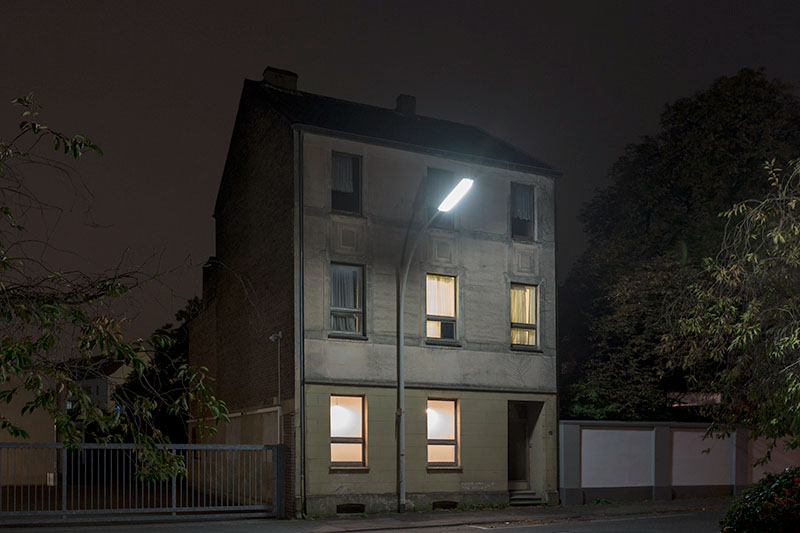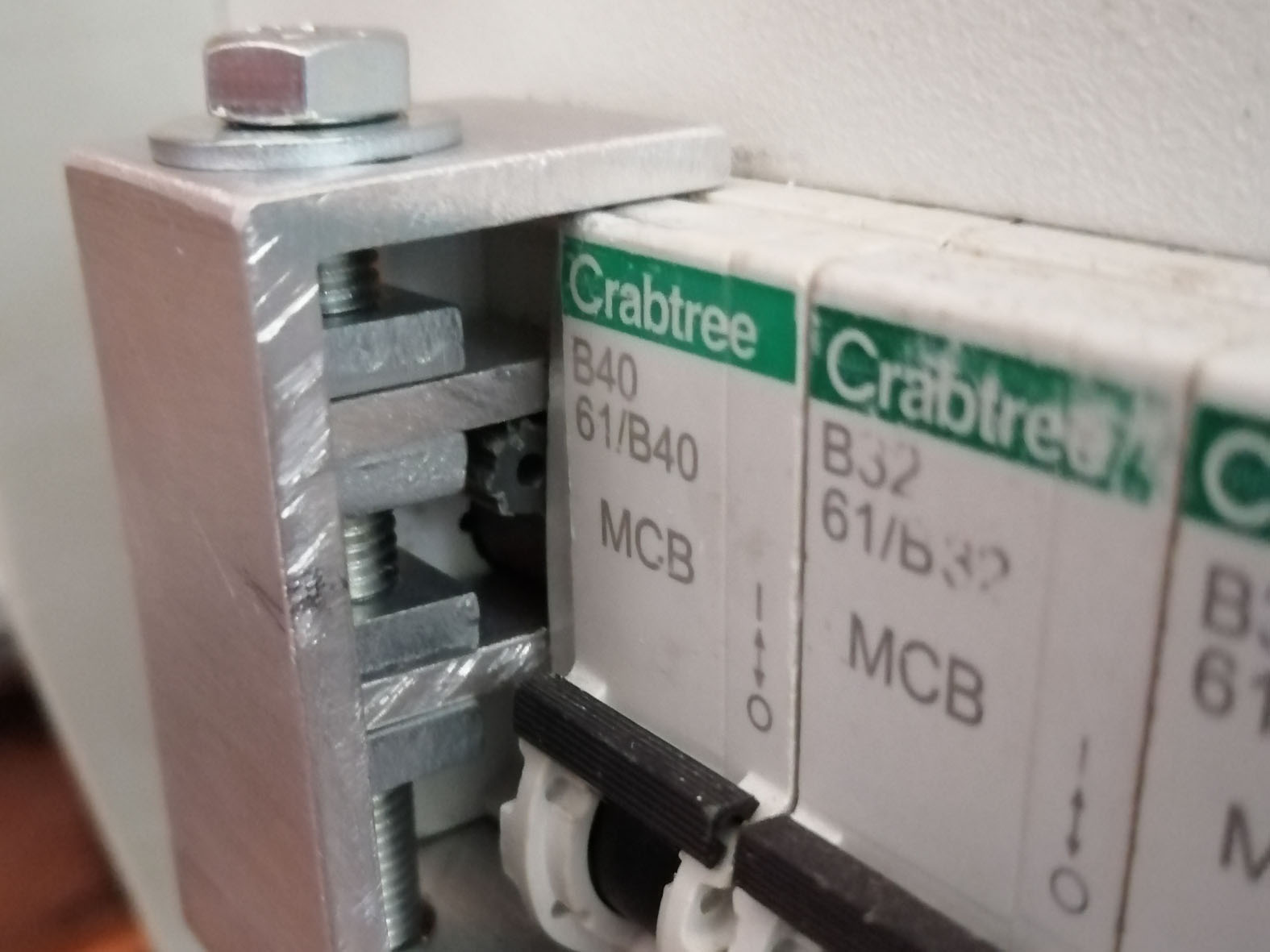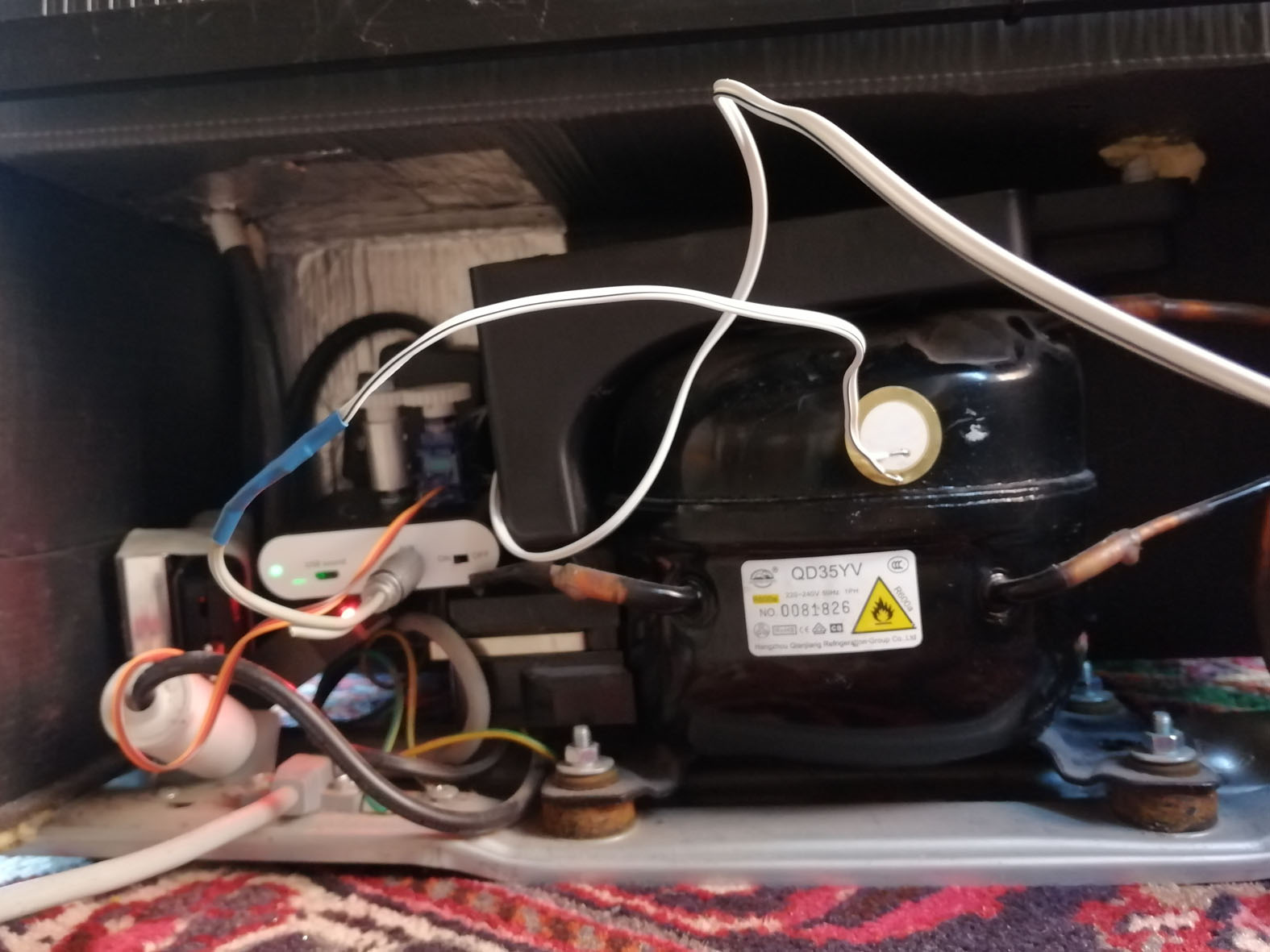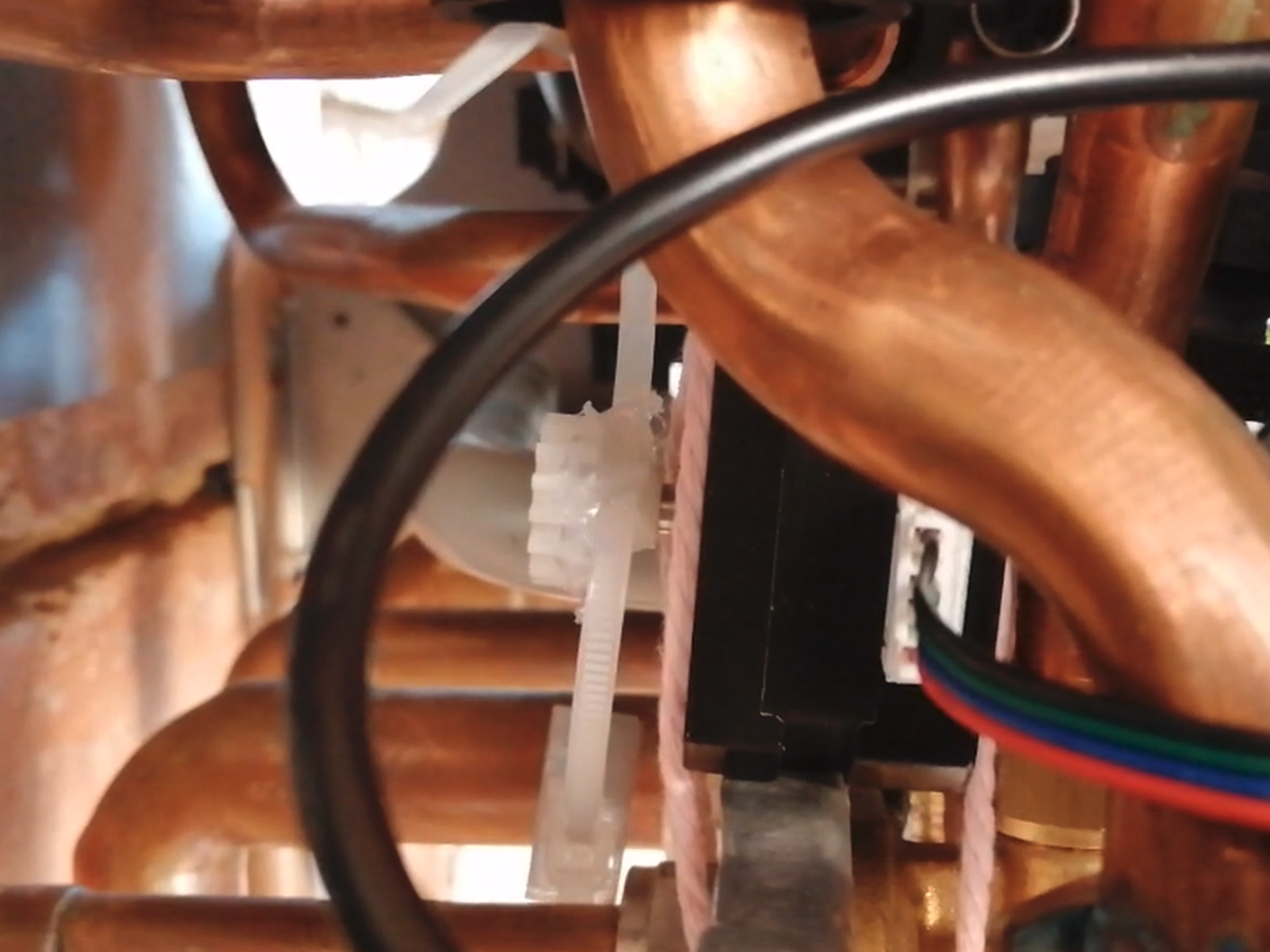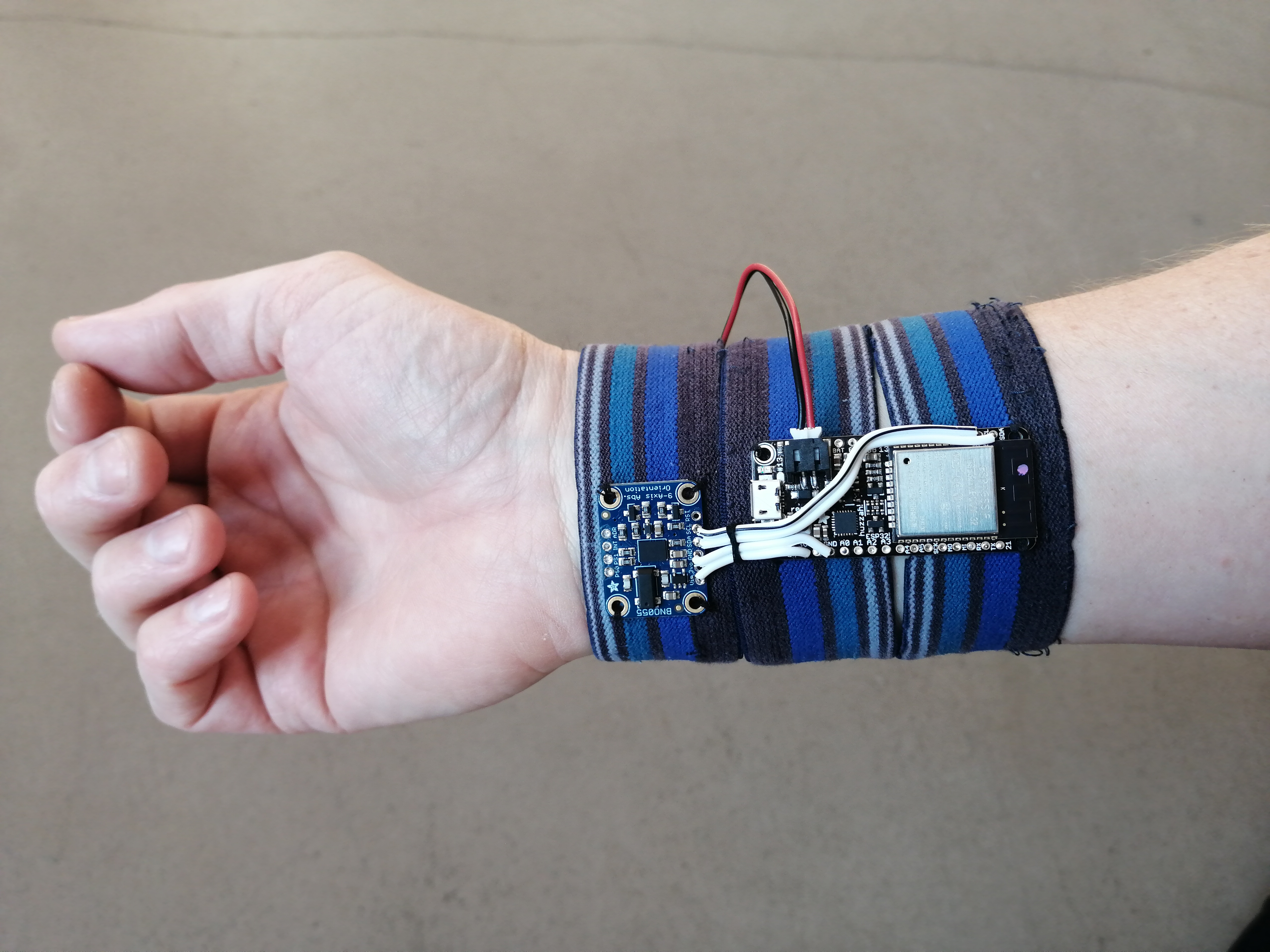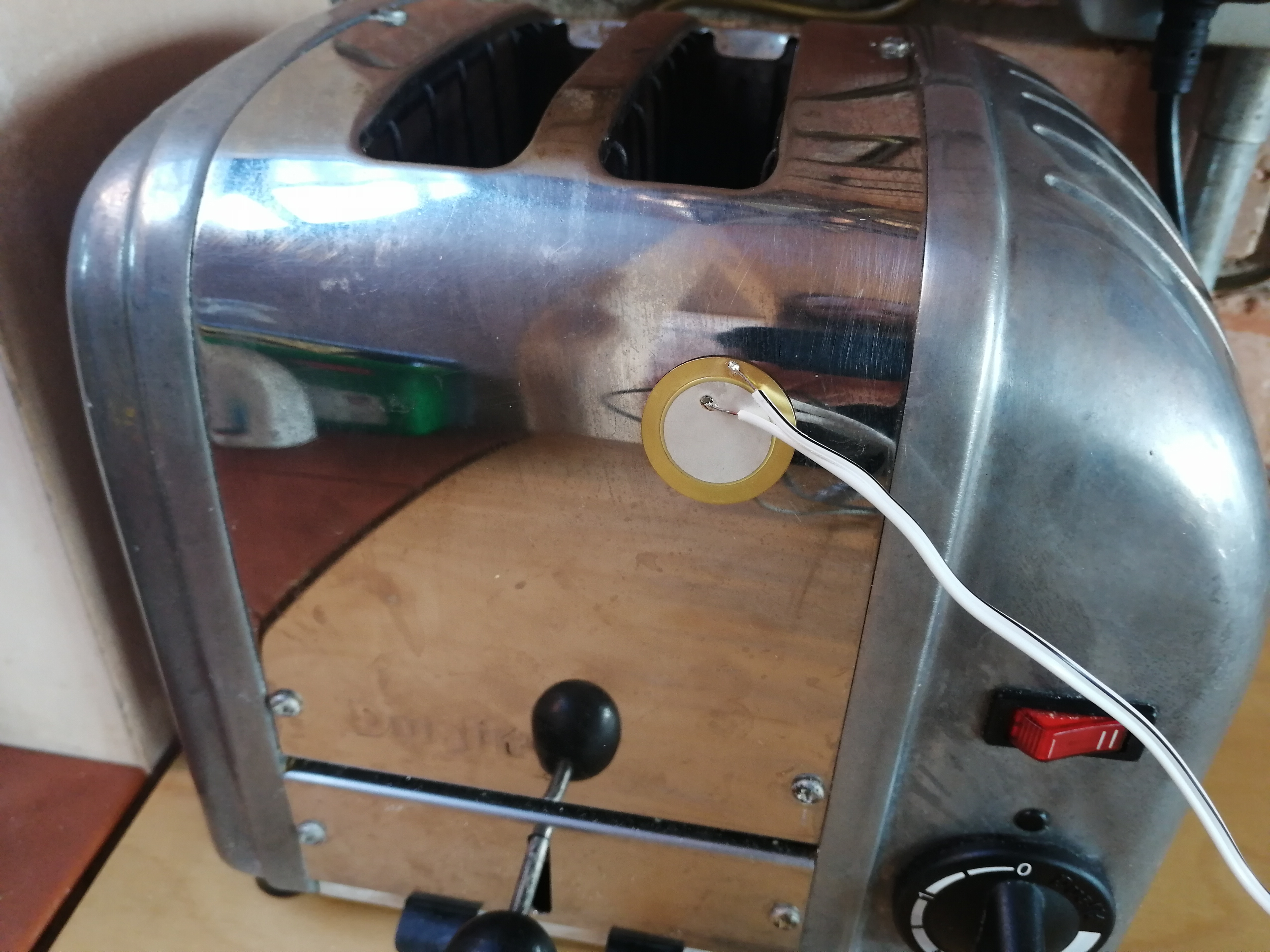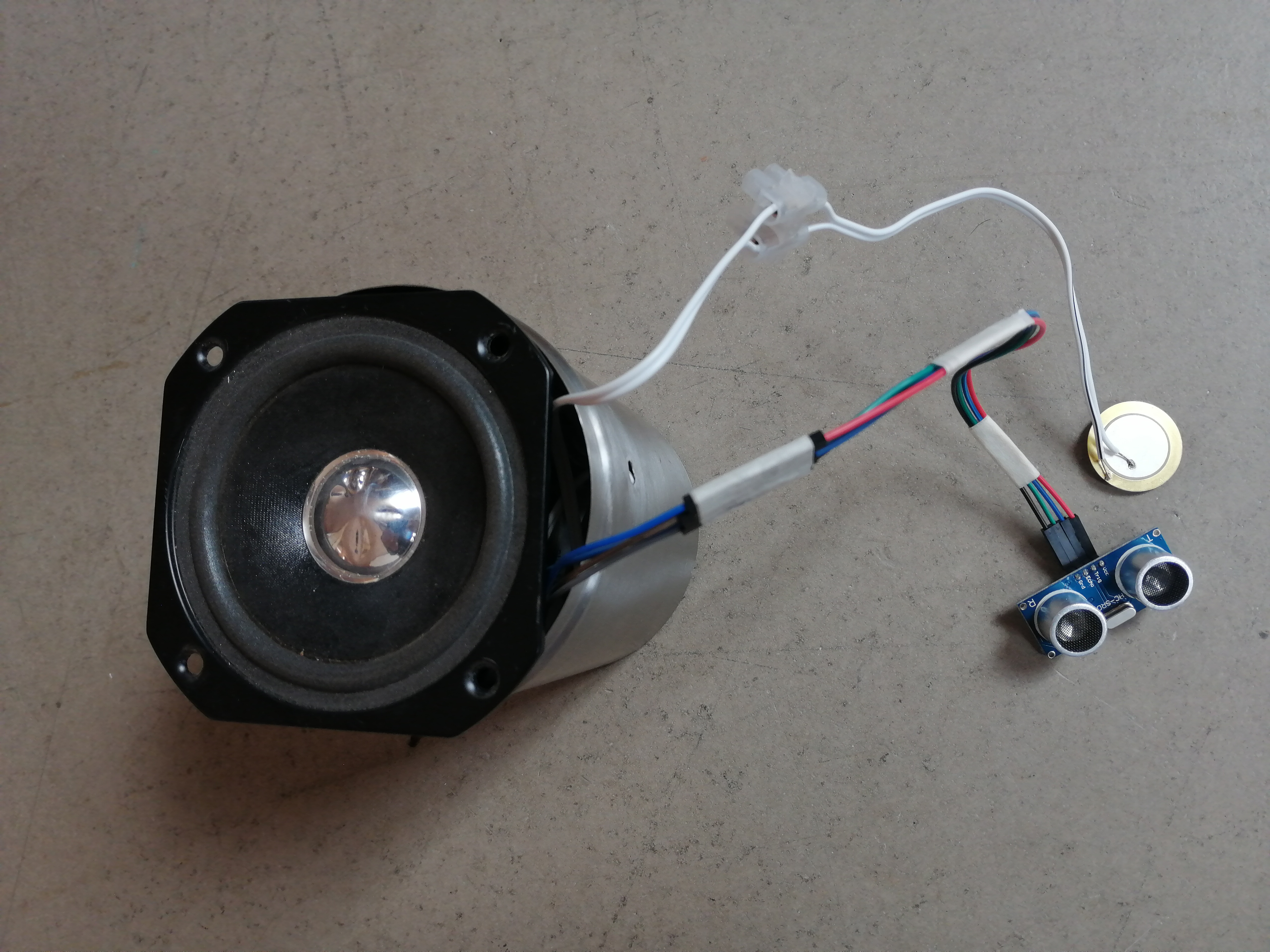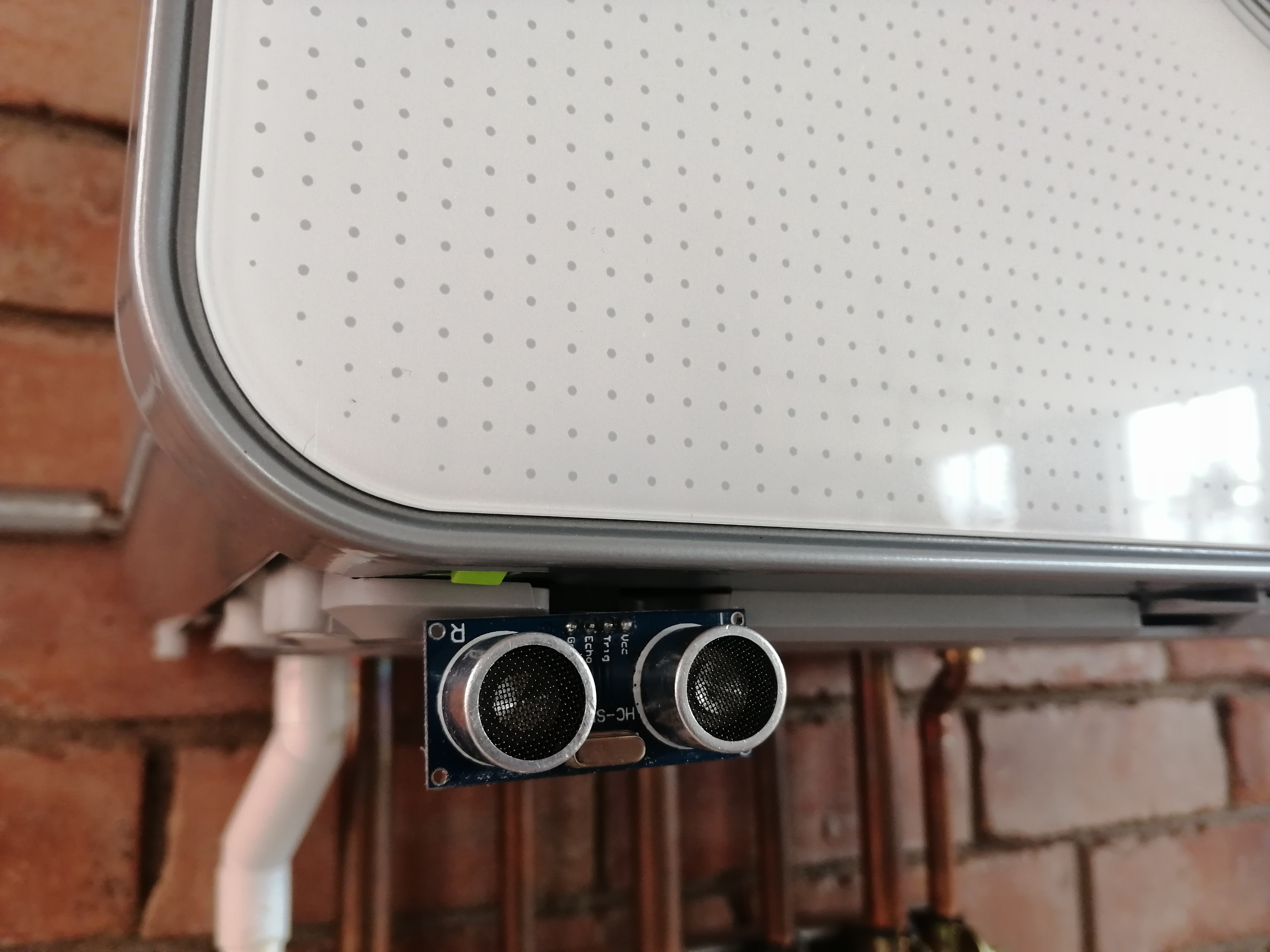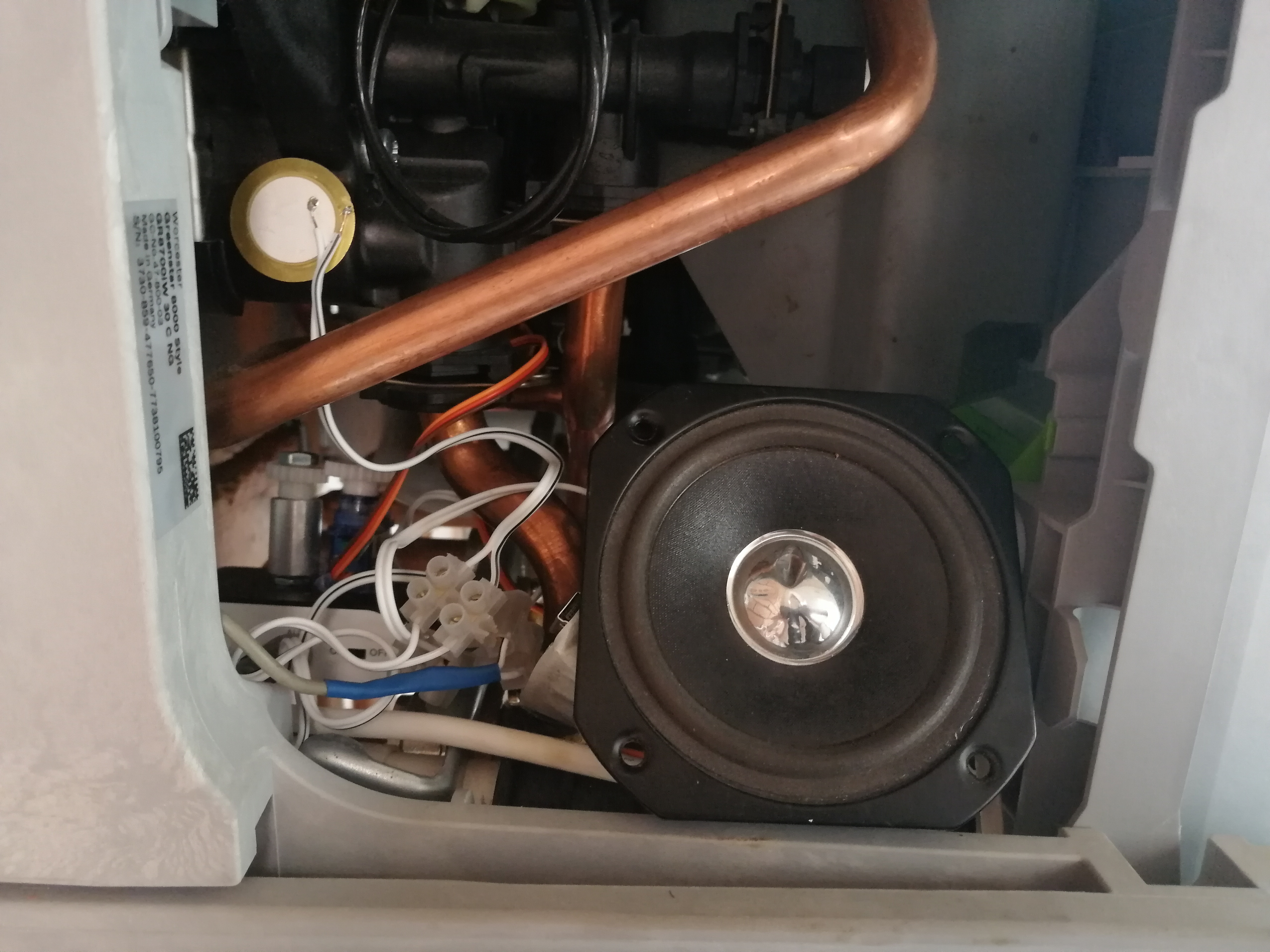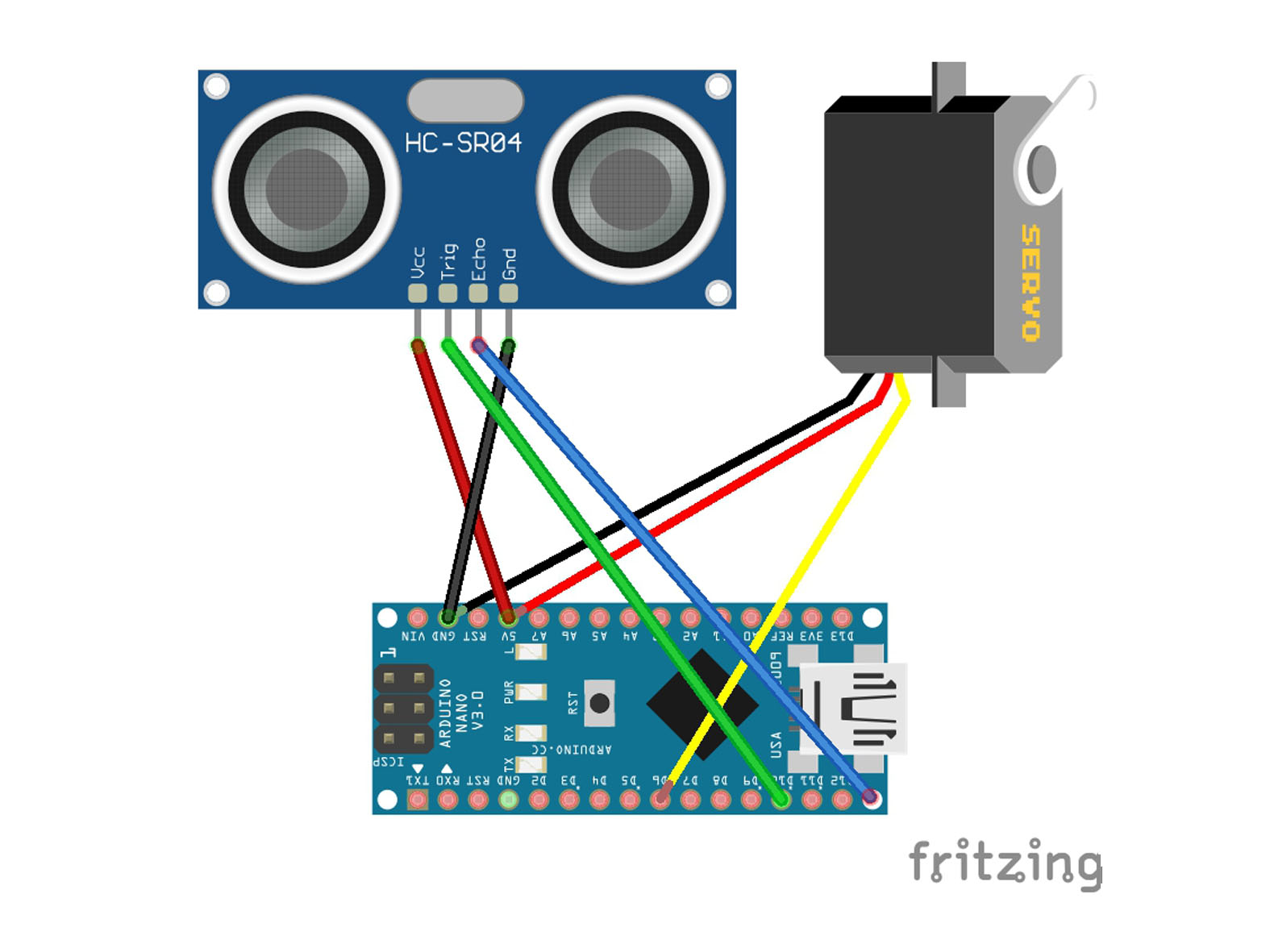Background Relations
This project is the main part of a series of experiments which investigates ways humans interact with technology, specifically our background relations with them. Using phyiscal computing to highlight technological objects / systems which function in the background of our everyday environment, bringing them to the foreground. How does this change our relationship to the objects and therefore our surroundings, our experience of the world?
produced by: Jonny Fuller-Rowell
Introduction
What role does technology play in everyday human experience? How do technological artefacts affect people existence and their relations with the world?
A fridge is supposed to be a mundane thing with one purpose but how much does it also plays a part in an experience of a home. Does a boiler have a presence? Does a clock act like a metronome to our life, affecting the speed at which we live? This projects investigates how technological objects / systems which operate in our home effect our experience of the world.
Concept
Philosopher of human technology relations, Peter-Paul Verbeek writes,
"Technologies give rise to a background field in which we can have experiences without explicitly experiencing these technologies. They are present but absent at the same time. They give form to our experience without us noticing them."
This experiment highlights the systems present in my home (fridge, fuse box, boiler, clock and light) and investigates how together they create a ‘background field’. By slowly accentuating the artefacts / systems qualities I want investigate at what point they move from unconscious background relations to our conscious experience.
I was inspired by sound artists, David Cunningham, and John Cage. David Cunningham's The Listening Room (2003) attempts to make the audience more conscious of what they are 'listening' to, to expose the space itself by magnifying the sounds of the room. His work allows the resonant frequencies of a space to become audible, Cunningham's system merges these sounds into one ambient cacophony escalating in amplitude until triggering a noise gate and beginning again. John Cage's 4'33” (1952) is also an important influence, each 'performer' quietly listens with full awareness to the sounds audible at that moment, making the distinction between hearing (passive) and listening (active). The space the audience is in 'is' the artwork. In a similar way, only in a much more specific space, Gregor Schneider’s 'Haus u r' takes viewers on a tour through the his inherited his family home. The artist inserted extra walls to create rooms within rooms, turning the structure into a labyrinth of corridors and passageways, windowless and soundproof chambers, blocked doors and inaccessible areas. The artwork is the house itself with impercepitble changes that affect the unconscious experience, since its opening in 1985 visitors have reported "disturbing phenomena within the structure".
John Cage, 4'33'' (1952) score, 11 x 8 1/2" (27.9 x 21.6 cm) sheet paper. / David Cunningham, The Listening Room (2003) Installation view in Chisenhale Gallery, London. / Gregor Schneider, Haus u r, Rheydt, 1985.
Technical
By using a lamp to activate the ‘installation’ (a person switches it on) a temperature sensor hidden in the lamp reads the exponential curve of data the heat from the bulb creates. This data is communicated to the other objects / systems via a wireless radio frequency transmitter. Each object /system translates the data in their own way to increase their presence in the space.
The Fridge: Uses a piezo microphone / with a small amplifier attached to the compressor at the back of the unit. This amplifies the vibrations of the fridge increasing the humming sound it emits. The volume dial on the amplifier is linked to a small servo motor which is mapped to the sensor data from the lamp. As the heat of the bulb gets hotter the sound of the humming fridge gets louder. A speaker is installed between the top of the fridge / underneath the kitchen surface.
The Boiler: A small silent stepper motor in implanted inside the boiler with a small ‘hammer’ (made with a cable tie and a small piece of metal) this rotates hitting parts inside the boiler creating clicking chinking noises, that boilers sometimes make. The stepper motor increases in speed with the data from the lamp increasing the frequency of the noises.
The lamp: itself uses its own data to trigger a relay inside the lamp base which flickers the light off and on. Only subtlety at first until the temperature reaches its peak, by then continually flickering.
The Clock: uses a small 5v stepper motor which is incorporated into the existing mechanics. The clock is calibrated so that the starting temperature of the lamp makes the clock move at normal speed, however as this increases the second hand starts to move faster.
The Fuse box: controls the narrative by switching itself off after a certain temperature has been reached. A small linear actuator is fitted to the main switch on the box which is triggered at the appropriate time. After one minute it turns everything back on to reset the installation.
As all the devices use the same temperature data from the light bulb they all act in unison to create a crescendo using the exponential curve of data the heat produces. I.e. the pattern of data shows sharper increases over time, starting slowly, gathering momentum to a climax.
Adapted objects used in the installation: Lamp, clock, fuse box, fridge and boiler.
Further development
Developing the project further would be hard without user input however I would l like to experiment with the different interactions of the object. At present the light controls the system and the fuse box turns everything off. It might be interesting to have other interactions / conversations which the user might be able to be a part of in some way. Overall the production could be with better housing of compounds in the their respective objects.
Self-Evaluation
As the concept was quite a subtle one the implementation had to be likewise, calibrating the installation was probably one of the most important parts to its effectiveness, and one that I would need to spend longer on. Overall I thought the installation was quite effective but it would need a lot of user experience to develop the project further. I was expecting most of the events to happen, it would only really be interesting for someone that wasn't expecting anything to happen when they switched on the light. How long would it take them to notice that something was going on? The most interesting part of the research would be comparing the different reactions / feeling of participants.
Performing Objects
This project takes technological objects functioning in the background and finds ways to directly / consciously interact with them. The objects become the performers of the space rather than just the context to it. A ESP32 feather board and an orientation sensor attached to my wrist send data via OSC to a MAX MSP program, controlling the sounds of objects.
produced by: Jonny Fuller-Rowell
Introduction
After spending the last two months at home my immediate surrounding have become a greater part of my life. I realise how much functioning technological objects/systems construct this environment and want to investigate how they might influence me both consciously or unconsciously.
Concept
I want to experiment with ways humans interact with technology and how this changes our relationship to the objects and therefore our surroundings, our experience of the world. This project takes technological objects functioning in the background and finds ways to directly / consciously interact them, the objects become the performers of the space rather than just the context to it.
Often the only time we directly experience these technological objects is when they are absent or broken, by attempting to recontextualising these relationships we might become more aware of the role these functioning technological objects play in our experience of everyday life.
Technical
A piezo microphone was used to record the sounds of some objects in my home, such as the WIFI and the fridge humming.
I use a ESP32 Feather Board which can send data over the Wi-Fi using open sound control with an Adafruit BNO055 Orientation Sensor. This has 9-DOF (degrees of freedom) - accelerometer, gyroscope and magnetometer, this data is used to control the sounds of objects.
The components are sewed onto some elastic to fit around the wrist so when the arm / wrist is moved the data from the accelerometer, gyroscope and magnetometer will change. A small 3.7v lipo battery is used to keep everything compact.
The ESP32 sends the data from the sensor to a MAX MSP program using OSC. The object’s sounds are loaded into the program with the volume of the objects mapped to the different reading from the orientation sensor. I have played with the idea of being a conductor and the objects my instruments. As I move my arm around the objects sounds are performed. I have loosely mapped the position of the objects to its sound, i.e. if the toaster is on the left then as I move my hand to the left, the toasters volume will increase.
After experimenting with the objects individually I then play them all at the same time using the movement of my arm to control the sounds. After a bit of calibration and practice I can begin to control the narrative of the sounds.
Wrist device (ESP32 feature + accelerometer + 3.7v battery) / Piezo recording objects / Fritzing diagram of wrist device.
Feedback Fields
This project attempts to materialise objects field of presence by creating ‘feedback fields’ which are triggered / amplified by a person’s proximity to the object. By creating devices using distance sensors embedded in the objects themselves, which map the amplitude of the feedback to the distance of a person..
Produced by: Jonny Fuller-Rowell
Introduction
Do objects have a presence, how much space do they take up in our psyche? Do we unconsciously give the WIFI more space than the boiler. Even though a fuse box is smaller / less perceptibly noisy than a fridge do we activity give it more space in our everyday lives, possibly unconsciously aware of electromagnetic frequencies that might it be emitting. Is it possible to materialise these ‘fields of presence’. Would this increase our awareness of the space and what is in it?
Concept
After experimenting with different ways objects / systems influence our daily life I started to be more aware of their presence in my home environment. Their significance was changing for me, the fridge for example has become louder and I am more aware of the fuse box in the corner of the room. The ‘field of presence’ the objects /systems have changed for me. As an exercise I drew a plan influenced by Psychogeography of how much ‘space’ a certain object has in my psyche, this became the blueprint for the project ‘feedback fields’.
Technical
An ultrasonic distance sensors measures the distance a persons is from the object. This distance is mapped over a 180 degrees of a servo motor. The servo is geared to the volume dial on a small 12v amplifier which is connected to a piezo microphone attached to an object. As the distance decreases it turns the volume on the amplifier up enhancing the piezos sensitivity. As the participant walks around the environment they intersect the feedback field from the objects, activating the sound.
Device installed in a cylinder or attched to the object / Fritzing diagram


































































